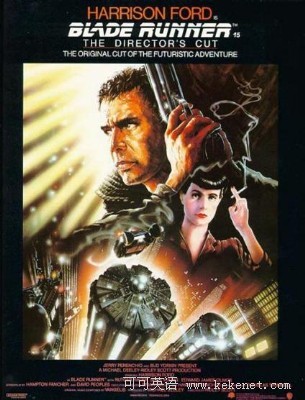Blade Runner
《银翼杀手》(1982)
In late 1981, director Ridley Scott showed Philip K. Dick an early cut of Blade Runner. Dick, who authored the book Do Androids Dream of Electric Sheep? — on which Blade Runner was based — said, "You would literally have to go five times to see it before you could assimilate the information that is fired at you." A richly textured mashup of Raymond Chandler–esque noir and dystopian nightmare, Blade Runner tells the story of a detective who hunts down and retires advanced androids called replicants. Like all great science fiction, the film asked big questions, like, What does it really mean to be human? (And slightly smaller questions like, Is Harrison Ford a robot or not?) Blade Runner baffled test audiences in early 1982, causing the studio to add a voice-over narration and change the ending, using leftover shots from Stanley Kubrick's The Shining. To date, seven different versions of the film have been shown, and if that isn't cause for confusion, we don't know what is.

1981年末,导演雷德利·斯科特向菲利普·迪克《银翼杀手》的粗剪版时,《银翼杀手》的原著小说《机器人梦见的是电子羊吗?》的作者菲利普·迪克这样说:“如果想理解这部电影的真正内涵,你最起码也要把他看五遍。”这是一部机构丰富混搭作品,影片混合了雷蒙德·钱德勒式的黑色幽默和反乌托邦式的噩梦。和所有伟大的科幻电影一样,《银翼杀手》向观众提出了这样宏大的问题:身为人类到底意味着什么?(小一点的问题是:影片中的哈里斯·福特到底是人还是机器人?)。1982年出,《银翼杀手》上映,当时的观众实在无法看懂,最后制片方只好为影片配上旁白,并使用斯坦利·库布里奇的影片《闪灵》的备用结尾作为影片的结局。时至今日,已经有七个不同版本的《银翼杀手》面世,如果这不叫“让人费脑子”的电影的话,那就没有其他电影能进入这张榜单了。



















